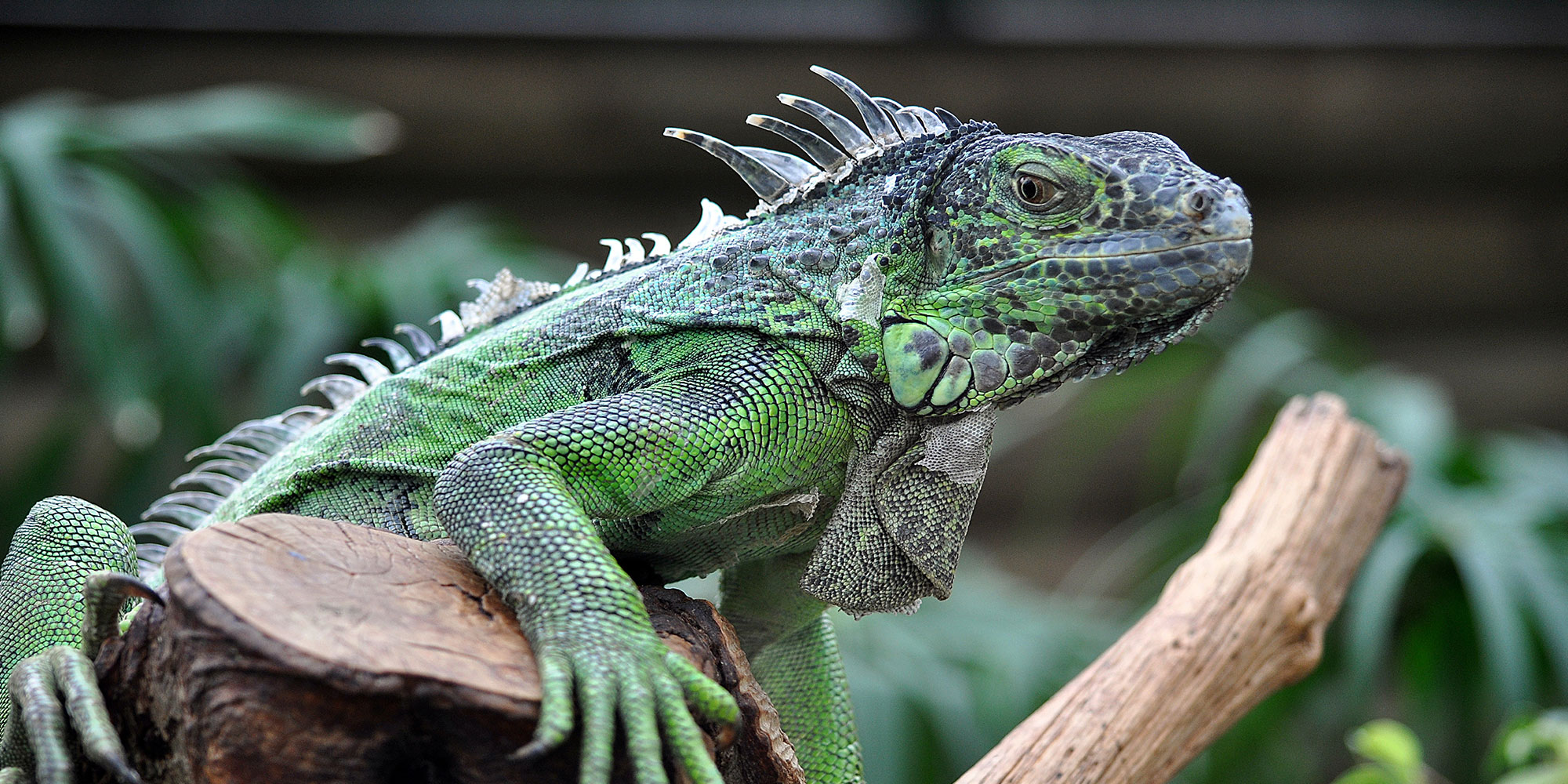Overgrown and forgotten, this ancient Atlantean marketplace now provides a home to some of the most interesting reptiles on Earth! The abandoned storefronts come alive with snakes, lizards and dragons! Come and check out some of our newest reptile inhabitants:
Green Tree Python
Morelia viridis
The green tree python is a skilled and dangerous predator that can grow to up to six feet in length! Adapted to living up in the trees in the rain forests of Southeast Asia, these snakes sit and wait for small mammals and reptiles to wander close enough for them to strike. They lack venom and use constriction to kill their prey.
Tegu
Salvator merianae
Tegus are lizards, native to South America. They are resourceful and live in a variety of different habitats, including rain forests, savannahs and deserts. They are omnivores, feeding on both plant material (such as seeds and fruits) and animals (such as insects, spiders, snakes, and small rodents). Despite their huge size, they are generally very gentle if handled regularly as pets, though they can be aggressive and have a powerful bite! Their bite is stronger than some small crocodilians!
Green Iguana
Iguana iguana
Green iguanas are arboreal (meaning they tend to like living up in trees and forest canopies), active during the day, and usually found near water. Iguanas are herbivores, feeding mostly on plant matter, and as such, they are presented with a special problem: salt. Since plant matter has a high salt content and iguanas must eat a lot to meet their energy needs, the lizards are in danger of a deadly, internal water imbalance. Fortunately, they have two salt glands within their two prominent nostrils, which they use to sneeze out excess salt!
Green Aracari
Pteroglossus viridis
The Green Aracari gets its name from the beautiful green feathers covering its back. At just over a foot long and weighing less than half a pound, these birds are some of the smallest members of the toucan family. Interestingly, in spite of their small size, their beaks can be nearly half as long as their body! You can tell a lot about a bird based on its beak! Green Aracaris use their large, serrated beaks to grab and tear through fruit, which comprises the majority of the bird’s diet. However, these beaks can serve other functions, as well. They often use them as tools to excavate tree cavities for nest building and can be tapped on rocks or trees as a warning to predators. These birds come from the tropical rain forests of northern South America. Males have black heads and females have reddish brown heads.
